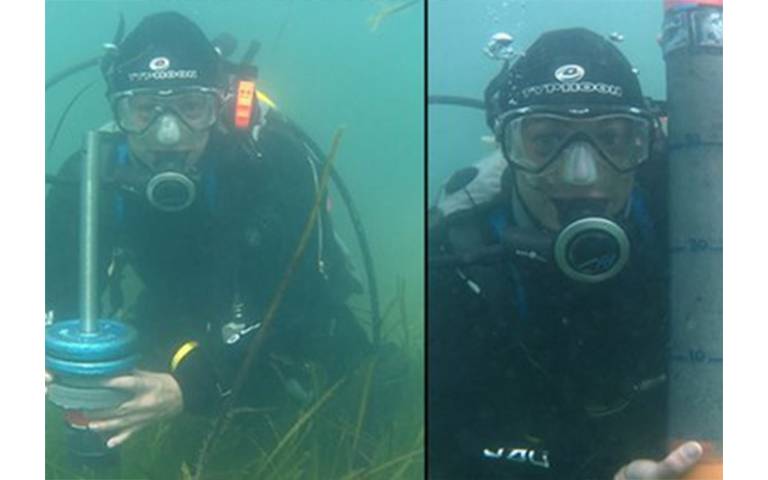Seagrass loss around the UK higher than previously thought
5 June 2021
Alix demonstrates urgent need for restoration strategy

Seagrass meadows, the only marine representative of the seed and flower-producing angiosperms in UK waters, form an essential part of healthy marine ecosystems, also acting as important carbon sinks.
A new study, featured in The Guardian of 4th March, shows that in some areas as much as 92% of them may have been lost, a much higher rate than previously estimated. It also highlights the lack of historical evidence about their extent and the urgent need to protect and restore current and degrading seagrass meadows.
The research, published in Frontiers in Plant Science, by Dr Alix Green, a former NERC Doctoral Training Partnership student based in UCL Geography, with Dr Richard Unsworth (Swansea), Dr Michael Chadwick (KCL) and Dr Peter Jones (UCL Geography), is one of the first studies to bring together seagrass data from various sources and offer a systematic national estimate of its current and historic extent and decline. It concludes that at least 44% of the UK’s seagrasses have been lost since 1936, and 39% since the 1980s.
The two indigenous UK seagrass species are protected under several EU Directives and the UK’s Wildlife and Countryside Act 1981. The study sought to estimate their current geographical distribution and recent and historic percentage losses. Several datasets were collected, distinguishing between those developed before and since 1998, and areas were identified of high, medium, and low certainty of loss.
Alix Green explains::
"Our paper establishes the best estimate of current seagrass extent in the UK, confirming at least 8,493 hectares, and documents a loss of at least 39% of areal cover in the last 30 years. Historically, we show that this loss could be as much as 92% and that these meadows could have stored 11.4 Mt of carbon and supported approximately 400 million fish."
Worryingly, these estimates are likely to under-represent the true loss.
The results show the urgency of protecting current seagrass meadows and restoring those that have been degraded or lost. The study also shows that not all seagrass meadows in the UK have suffered equally, and some sites show signs of recovery, which should motivate conservation initiatives.
Co-author Peter Jones concludes:
‘‘The next decade is a crucial window of opportunity to address the inter-related crises of biodiversity loss and climate change – the restoration of seagrass meadows would be an important contribution to this. This will involve restrictions such as reduced boat anchor damage, restricting damaging fishing methods and reducing coastal pollution, including through marine protected areas.’’
See
- Paper: Historical analysis exposes catastrophic seagrass loss for the United Kingdom
- The Guardian
- The Conversation
- London NERC DTP
 Close
Close

